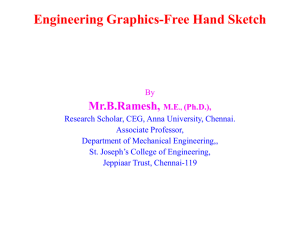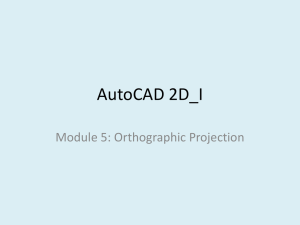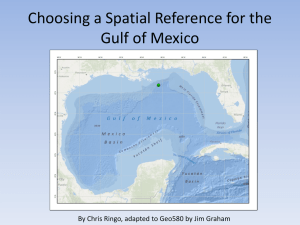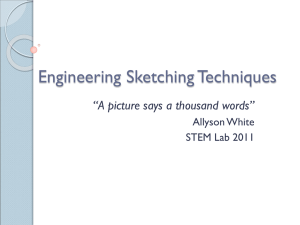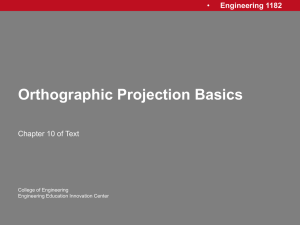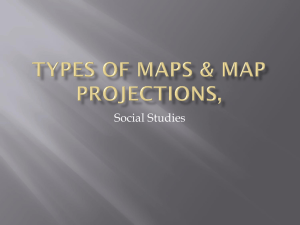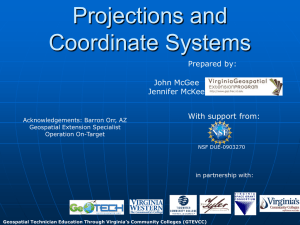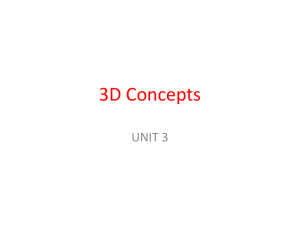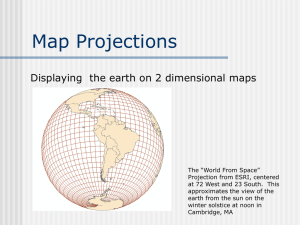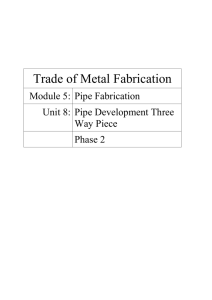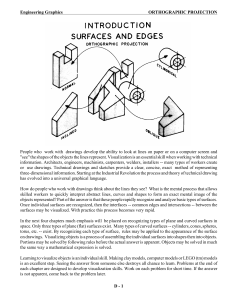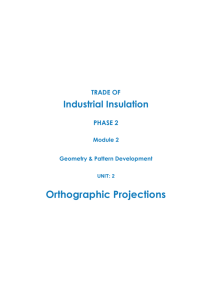Lecture_4.2
advertisement
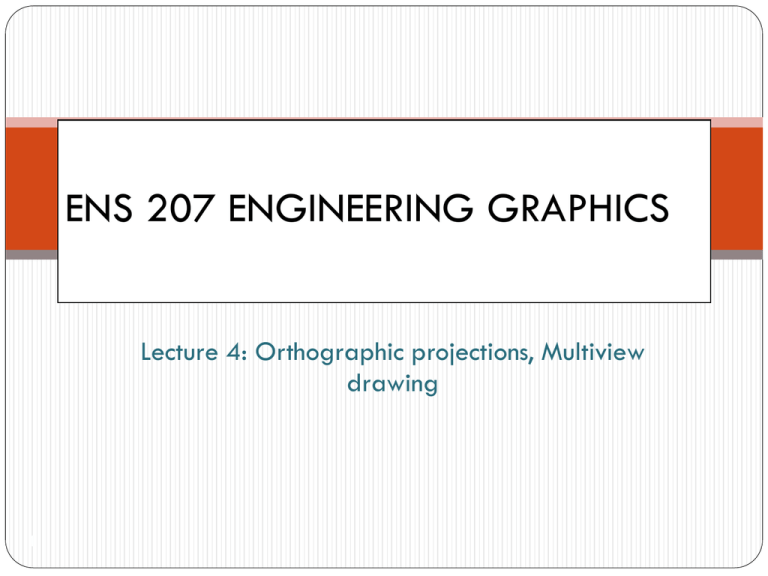
ENS 207 ENGINEERING GRAPHICS Lecture 4: Orthographic projections, Multiview drawing 1 PROJECTION THEORY The projection theory is used to graphically represent 3-D objects on 2-D media (paper, computer screen). The projection theory is based on two variables: 1) Line of sight 2) Plane of projection (image plane or picture plane) MEANING Orthographic projection is a parallel projection technique in which the parallel lines of sight are perpendicular to the projection plane Line of sight is an imaginary ray of light between an observer’s eye and an object. There are 2 types of LOS : parallel and converge Parallel projection Perspective projection Line of sight Line of sight Which Views to Present? General Guidelines Pick a Front View that is most descriptive of object Normally the longest dimension is chosen as the width (or depth) Most common combination of views is to use: Front, Top, and Side View Views other than the Principal Views are called Auxiliary Views 5 AU 2005 8 Methods of Drawing Orthographic Projections First Angle Projections Method Here views are drawn by placing object Third Angle Projections Method Here views are drawn by placing object in 1st Quadrant in 3rd Quadrant. ( Fv above X-y, Tv below X-y ) TV FV X TV ( Tv above X-y, Fv below X-y ) Y X Y FV G L First Versus Third Angle Projection Third Angle Projection Associated with English units ANSI Symbol First Angle Projection Associated with SI units Conventional Orthographic Views Width Top View Front View AU 2005 Depth Right Side View Height 16 Step 1 – Lightly Block Three Views Use very light lines for drawing in the construction lines AU 2005 17 FOR T.V. ORTHOGRAPHIC PROJECTIONS FRONT VIEW x PICTORIAL PRESENTATION IS GIVEN DRAW THREE VIEWS OF THIS OBJECT BY FIRST ANGLE PROJECTION METHOD L.H.SIDE VIEW y TOP VIEW FOR T.V. ORTHOGRAPHIC PROJECTIONS FRONT VIEW X Y TOP VIEW PICTORIAL PRESENTATION IS GIVEN DRAW THREE VIEWS OF THIS OBJECT BY FIRST ANGLE PROJECTION METHOD L.H.SIDE VIEW FOR T.V. ORTHOGRAPHIC PROJECTIONS FRONT VIEW X Y TOP VIEW PICTORIAL PRESENTATION IS GIVEN DRAW THREE VIEWS OF THIS OBJECT BY FIRST ANGLE PROJECTION METHOD L.H.SIDE VIEW FOR T.V. ORTHOGRAPHIC PROJECTIONS FRONT VIEW X PICTORIAL PRESENTATION IS GIVEN DRAW THREE VIEWS OF THIS OBJECT BY FIRST ANGLE PROJECTION METHOD L.H.SIDE VIEW Y TOP VIEW FOR T.V. ORTHOGRAPHIC PROJECTIONS FRONT VIEW X Y TOP VIEW PICTORIAL PRESENTATION IS GIVEN DRAW THREE VIEWS OF THIS OBJECT BY FIRST ANGLE PROJECTION METHOD L.H.SIDE VIEW FOR T.V. ORTHOGRAPHIC PROJECTIONS FRONT VIEW X Y TOP VIEW PICTORIAL PRESENTATION IS GIVEN DRAW THREE VIEWS OF THIS OBJECT BY FIRST ANGLE PROJECTION METHOD L.H.SIDE VIEW FOR T.V. ORTHOGRAPHIC PROJECTIONS 450 30 FV 40 X Y 30 D TV 40 O PICTORIAL PRESENTATION IS GIVEN DRAW FV AND TV OF THIS OBJECT BY FIRST ANGLE PROJECTION METHOD 15 40 PICTORIAL PRESENTATION IS GIVEN DRAW FV AND TV OF THIS OBJECT BY FIRST ANGLE PROJECTION METHOD ORTHOGRAPHIC PROJECTIONS 30 FOR T.V. FV RECT. SLOT 10 50 35 10 X 20 D TV 60 D 30 D TOP VIEW Y HIDDEN LINES Hidden lines are used to represent surfaces that are not directly visible in an orthographic view. SLANTED SURFACES Slanted surfaces are surfaces that are not parallel to either the horizontal or vertical axis. PROJECTION BETWEEN VIEWS COMPOUND LINES A compound line is formed when two slanted surfaces intersect. The true length of a compound line is not shown in the front, top, or side views. OBLIQUE SURFACES Oblique surfaces are surfaces that do not appear correctly shaped in the front, top, or side views ROUNDED SURFACES Rounded surfaces are surfaces that have constant radii, such as arcs or circles. Surfaces that do not have constant radii are classified as irregular surfaces CASTINGS Casting is one of the oldest manufacturing processes. Metal is heated to liquid form, then poured into molds and allowed to cool. The resulting shapes usually include many rounded edges and surface tangencies
